SaaS SEO: Breaking Down How to Grow Your SaaS With SEO
The SaaS (Software as a Service) industry is more competitive than ever. SaaS is one of if not the fastest-growing sectors of IT. Forecasts indicate its market will grow to over $374 billion in the next four years. If you’re not Salesforce, Microsoft, or one of the big fish in the SaaS ocean, it’s easy to get lost and struggle to find or be found by clients. That’s where SEO comes in. The best SaaS companies have an SEO plan that puts them head and shoulders above the crowd. That’s why it’s vital to understand how to put together the best possible SaaS SEO strategy, discover what you need to focus on, and how and where to get your products and services in front of the right audience. This guide will show you what SaaS SEO is, why you need it, and how to grow your SaaS business with SEO.
What Is SaaS SEO?
SaaS search engine optimization (SEO) is increasing the organic traffic for a SaaS company’s website through various tactics. When you optimize your website, search engines rank your site according to relevant keywords and other elements. SEO is just one aspect of a robust approach to creating brand awareness in the marketplace. Alongside content development, outreach, and paid advertising, a well-crafted SEO plan puts your company in front of the right audience, leading to more conversions.
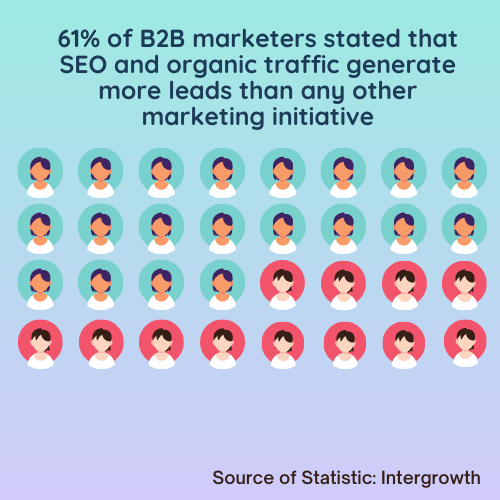
On the other hand, SEO transcends these elements because it’s built into the content you put out there. In other words, great content won’t matter if your SEO is subpar. SEO ensures your website, blogs, social media posts, and other content rank well in organic search results. Without SEO, your site will decrease in search rankings, which means you’ll see less organic traffic. That means less visibility and awareness of your SaaS products and services.
Over time, your client base will shrink, leads will disappear, and conversions will decline. All of this hurts your bottom line.
Why Is SEO Important for Your SaaS Business?
SaaS SEO is important for several reasons. Here are three you should consider.
It Drives Organic Traffic to Your Site
SaaS SEO is important because research shows that 68% of all online experiences start with a search engine. In other words, someone Googles something, and then, voila! They find you. Without SEO, these potential customers would never find your site, never learn about what you offer, and never become faithful, long-term customers.
An organic traffic insight tool might look like this:
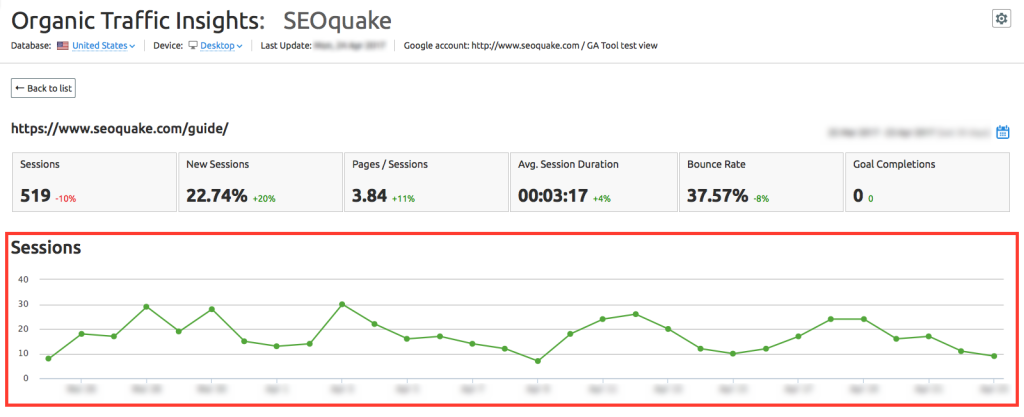
Screenshot from semrush.com
It Creates Brand Authority
SEO is a tool you can leverage to establish brand authority as a SaaS company. Sharing your knowledge through valuable, actionable SEO content will make you noticed. And that will build trust in your corner of the market. Don’t underestimate the significance of this. Why do people buy computers from Best Buy or vehicles from Toyota? Because Best Buy and Toyota have established themselves as authorities in their industries. And people trust source (whether it’s real or perceived!).
This authority that builds trust is what B2B marketers are after. Most marketers reported that credibility or trust and brand loyalty were top goals for their content development.
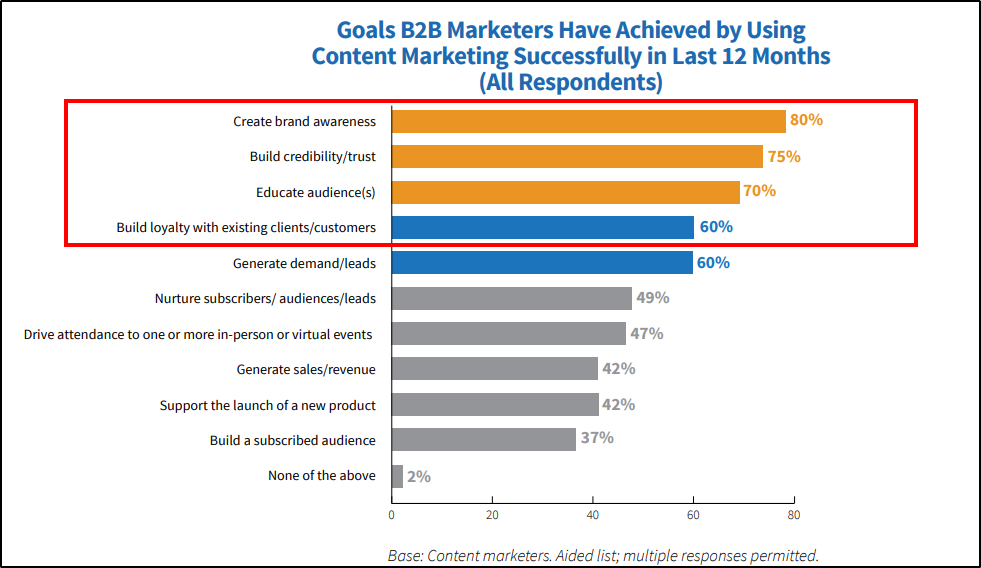
Graph source: Content Marketing Institute
It Helps Customer Retention
Customer retention is a sticking point for many SaaS businesses. Customers often feel the product lacks value and fail to renew their subscriptions. But what if you took stock of a wide range of real-world customer complaints and challenges and turned all of that into high-quality SEO content? We’ll talk more about how to make this happen below. For now, think about why you should consider doing this. Your current customers will better appreciate you as they understand your product’s full potential. New customers will be able to have their questions answered even before they ever buy your product.
How to Grow Your SaaS with SEO
Now, let’s break down how to grow your SaaS business with SEO by looking at seven key tactics you can start today.
Develop Your Keyword Strategy
The first tactic is to develop a solid keyword strategy. Identify the keywords (or key phrases) that are relevant to your industry in general and products and services in particular. These keywords have the potential to attract organic traffic to your site. Once you identify the keywords, you’ll use them in blog posts, landing pages, and your website, especially on the homepage.
A website like ahrefs can help you find keywords your customers search for and give you ideas for new keywords. The example below shows the results for “bank software.” “KD” means keyword difficulty and shows you, on a scale of 1-100, how difficult it is to rank in the top 10 organic search results for that word. “Volume” tells you how many times a month the phrase is entered into a search. Not every keyword needs to be directly related to your products or services.
For example, if you are a personal injury law firm like the Law Offices of Jay S. Knispel, you could also target keywords like “lane splitting” or “car accident attorneys.” This is because you focus on keywords your potential customers will search for, not limited to your product or service. Integrating both into your content is what will help generate traffic. The Jay S. Knispel law firm has done this and brings in substantial traffic from multiple keywords like the ones below.
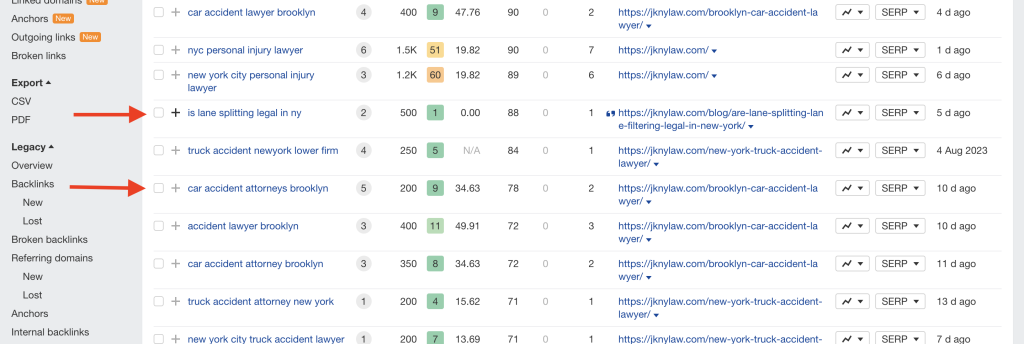
Focusing on competitor research would be an excellent place to start if you are unsure what keywords to target. You could do this with a tool like Ahrefs, Moz, or SemRush. Let us continue using the Jay S. Knispel law firm as an example. If you wanted to find keywords to target for that law firm, you could conduct some simple competitor research.
- First, enter your site name into the Ahrefs ‘Organic Competitor’ tab.
- Ahrefs will give you a list of competitor sites.
- For Jay Knispel, some competitors would be Attorney Brian White & Associates and the Allen Law Firm.
- You could then go to the ‘Organic Keywords’ tab in Ahrefs, put in those competitors’ websites, and list some keywords they rank for. It would look something like this:
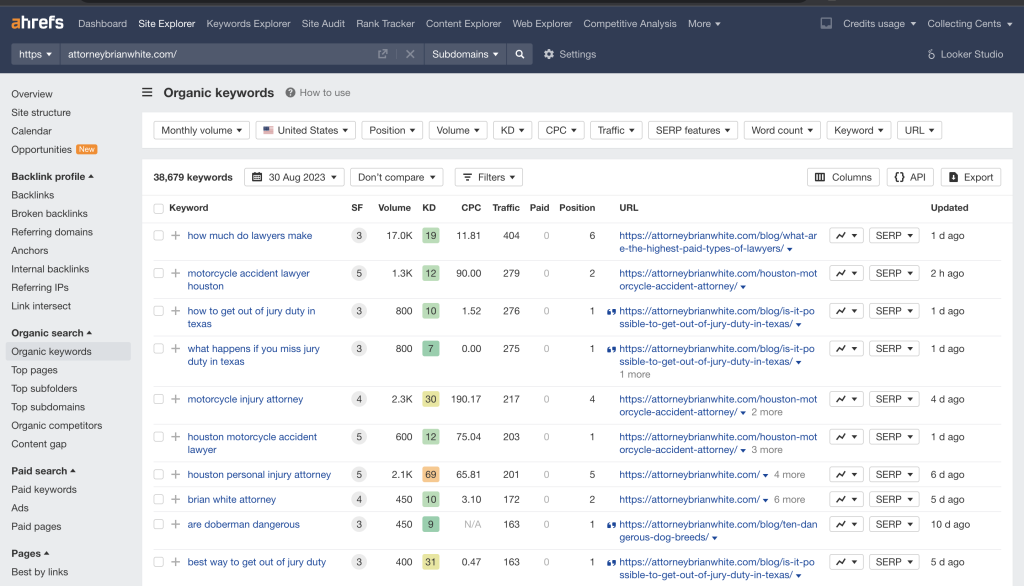
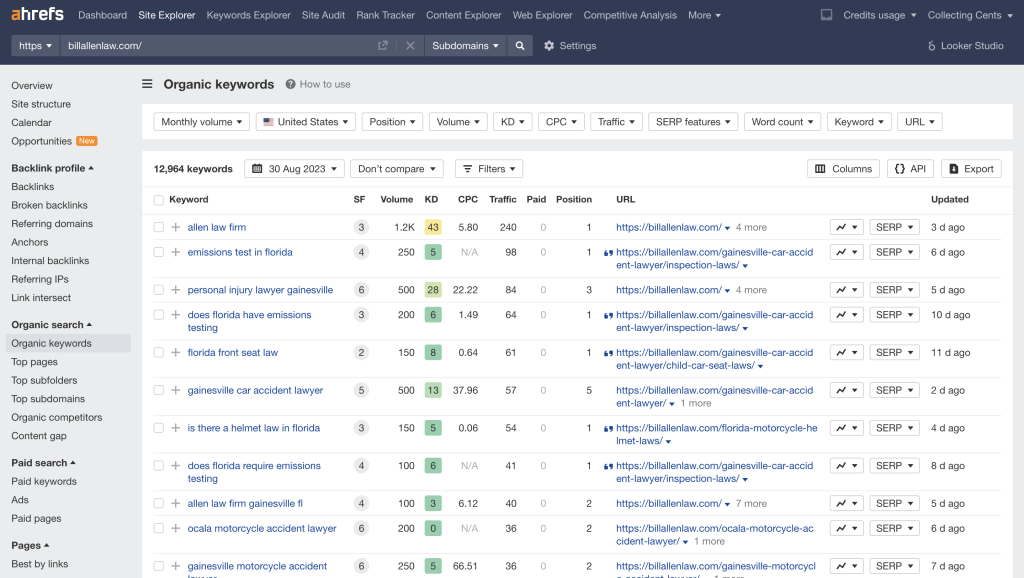
Using the keywords your competitors are ranking for as ideas. You could list keywords to go after.
This is an excellent method to use for two reasons:
- Since your competitors are already ranking for these keywords, you are more likely to be able to type. Their ability to organize is an excellent metric for determining if a keyword is worth going after.
- Ahrefs (and, for that matter- other SEO tools) will show you competitors that are mostly within the same DR level as you are (Domain Authority). So, you are looking at keywords from sites in the same league in the eyes of search engines. This is a better plan than competing with big domains that will easily outrank your website.
Optimize Your On-Site Content
Optimizing your website content is a core practice you can’t afford to neglect. Optimizing is a fancy way of saying your keywords and content are set up to increase the likelihood that search engines will find you. Four on-page SEO elements can strengthen your search results.
Title Tags
A title tag is the foundational piece of your on-site content. This is the title of your page that you’ll find in the search result and the browser tab. To optimize your title tag, you’ll want your keyword(s) in your title. This is what an optimized title tag for Marzzacco Niven & Associates looks like:
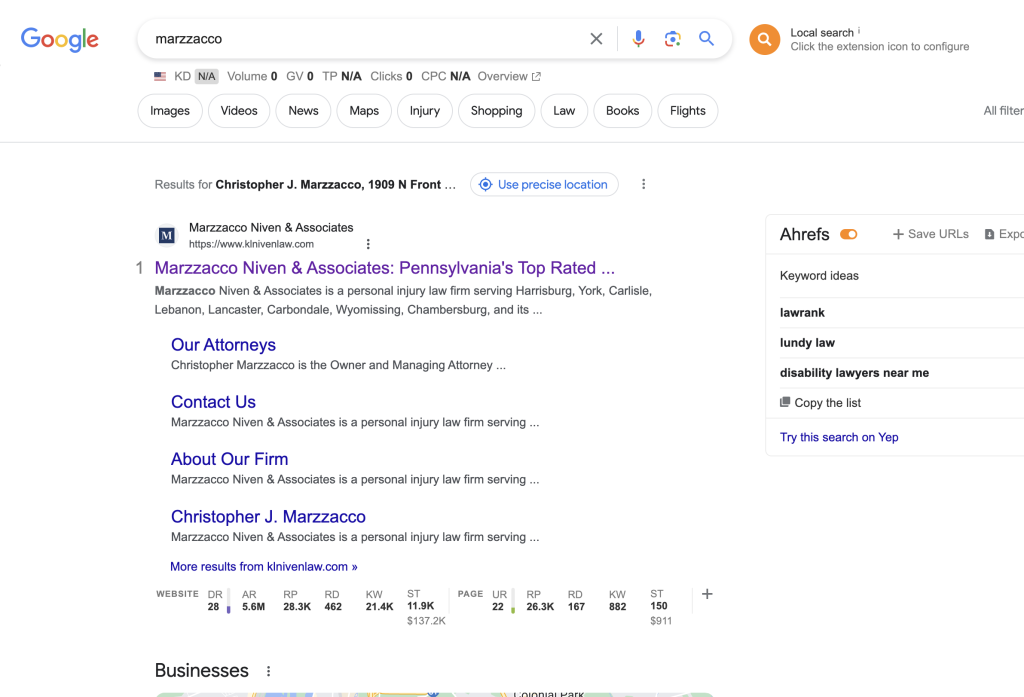
Meta Description
A meta description is an HTML attribute that summarizes the content of your page. It’s displayed in a search engine after the title tag. Google uses this to find relevant phrases that match the search query. An excellent example of a meta description is this one from Shaked Law that briefly explains the question.

Headings
Headings are tags within the HTML code that give search engines and users context because they explain what your page is about. An H1 heading is the largest (or most important), H2 is second, and so on. Insert keywords within these heading tags to show what your site is about. They also help to break up the flow of the page visually.
Look at the Lopez Law Group‘s homepage for an example. See the highlighted words in the screenshot. That’s an “H1” tag (sometimes the title tag). Now, search engines know this page is about helping visitors looking for personal injury services.
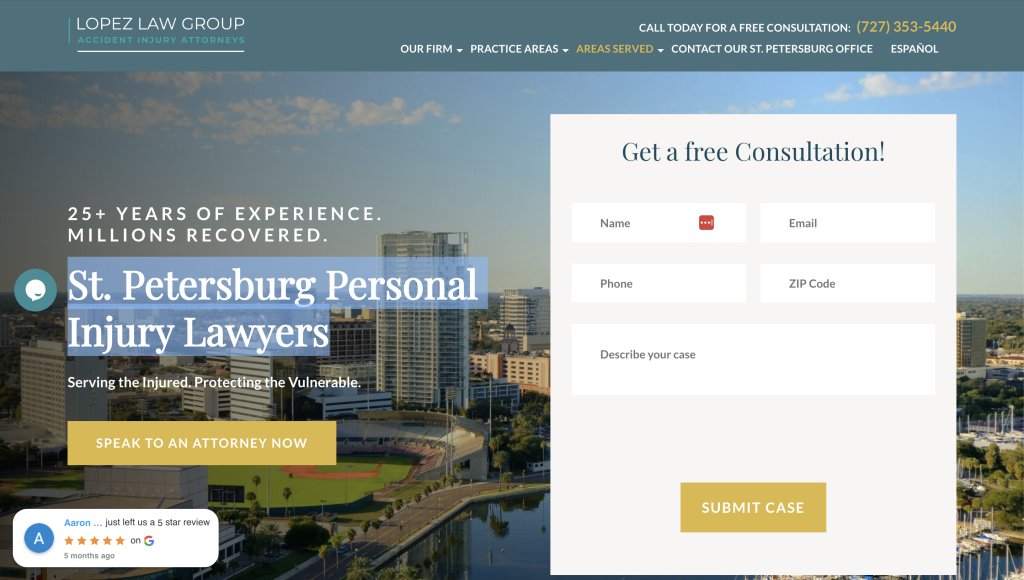
Internal Links
Internal links are hyperlinks between pages on your website. These links show search engines which pages are essential on your site. If you have many pages linking to one page, that search engine’s algorithm “earmarks” that page, so to speak, so that it can rank higher in the results. For example, if we were to bring up creating an automated marketing strategy in this post, we would hyperlink “automated marketing strategy” (like we did) as the anchor text to guide our readers on that topic.
Add to this that internal linking provides visitors with a more pleasant experience.
Optimize Your Code (aka Technical SEO)
We just discussed how to optimize your on-site content. Let’s talk about the engine: the technical SEO within your code. Technical SEO ensures that your site meets the requirements of Google or any other search engine. The main elements to consider are crawling, indexing, rendering, and website architecture.
As a SaaS business, your priority is to create great on-page content about your product. If you are a smaller company with a more straightforward website, the technical side won’t be as complicated, and you shouldn’t worry too much about it.
Even so, the technical side is something that your developer will know all about. Unless you know how to code, it’s not something you’ll handle. So it’s worth conversing with them to ensure those elements are accounted for.
Create Better Content than the Competition
Speaking of content, it is king! It always has been and always will be. And one of the best ways to optimize for organic results is to create better content than your competition.
Every page, blog, and product content must be optimized and better than your competitors. What does this mean? You need:
- Longer content on blog posts (ideally between 1,800-2,200 words)
- More comprehensive content
- Images or videos that are more engaging (and have more descriptive alt texts)
- More explicit formatting, with proper headings that make content easier to follow
Talking to your customers is An easy way to improve your content. Ask them what they want to see. They’ll know best.
Create Evergreen Content
Now that you’ve created content better than your competition, it’s time to turn some of your best content into “evergreen” posts. Evergreen means posts that stay fresh–like evergreen trees. You can regularly update content and refresh the date to make it timely for your visitors.
Lists, ultimate guides, how-tos, and checklists are just a few of the best types of content to turn into evergreen posts.
Refine Your Distribution Strategy
This tactic is straightforward. Make a list of all your mediums for distribution–email, social media, blogs, forums, shares, partnerships, etc. Build a strategy and schedule to ensure your content is distributed across all these channels. Remember that some content performs better in specific spaces. Never think some mediums aren’t necessary or won’t pay dividends!
Build Backlinks
Backlinks are links from other platforms to your website. If a high-ranking site links to your website, it boosts your rank. It’s like a search engine vote for your page. According to a survey conducted by uSERP, 67.5% of the survey participants indicated that backlinks significantly impact search engine rankings. You can get backlinks from websites by writing a guest post for them or giving them a quote they can use in an article on their site. To help, spy on your competition. Sort of. Go to Ahrefs, plug in your competitor’s domain, and see what sites link back to them. If the website is linked to a competitor, the chances are good they’ll be open to relating to you, too. If the link helped build your competitor’s website, it could help yours, too.
SaaS SEO – Wrapping It Up
Growing your Saas with SEO can seem like a daunting task. But it doesn’t have to be. It is difficult and will take time to hit your sweet spot. But it will be worth it over time. Once you implement these SEO tactics, you will scale your business and give you the long-term, sustainable growth you’ve always wanted.




Leave a Reply